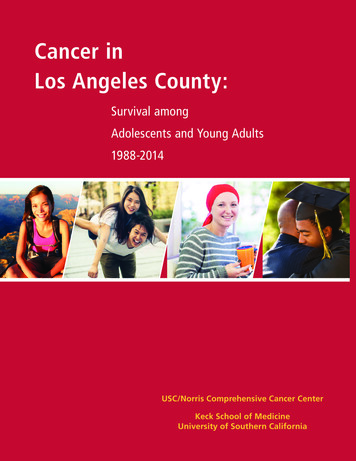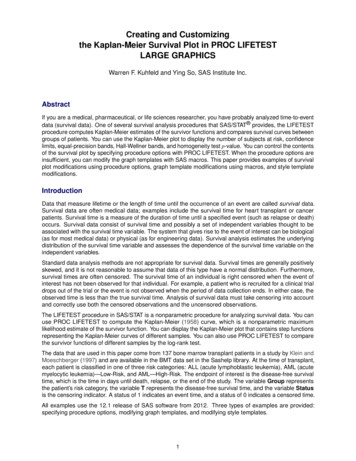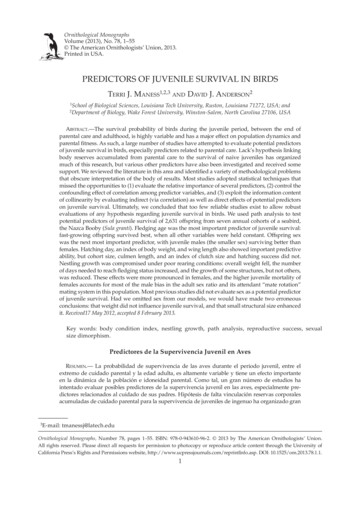
Transcription
Ornithological MonographsVolume (2013), No. 78, 1–55 The American Ornithologists’ Union, 2013.Printed in USA.PREDICTORS OF JUVENILE SURVIVAL IN BIRDSTerri J. Maness1,2,3 and David J. Anderson212School of Biological Sciences, Louisiana Tech University, Ruston, Louisiana 71272, USA; andDepartment of Biology, Wake Forest University, Winston-Salem, North Carolina 27106, USAAbstract.—The survival probability of birds during the juvenile period, between the end ofparental care and adulthood, is highly variable and has a major effect on population dynamics andparental fitness. As such, a large number of studies have attempted to evaluate potential predictorsof juvenile survival in birds, especially predictors related to parental care. Lack’s hypothesis linkingbody reserves accumulated from parental care to the survival of naive juveniles has organizedmuch of this research, but various other predictors have also been investigated and received somesupport. We reviewed the literature in this area and identified a variety of methodological problemsthat obscure interpretation of the body of results. Most studies adopted statistical techniques thatmissed the opportunities to (1) evaluate the relative importance of several predictors, (2) control theconfounding effect of correlation among predictor variables, and (3) exploit the information contentof collinearity by evaluating indirect (via correlation) as well as direct effects of potential predictorson juvenile survival. Ultimately, we concluded that too few reliable studies exist to allow robustevaluations of any hypothesis regarding juvenile survival in birds. We used path analysis to testpotential predictors of juvenile survival of 2,631 offspring from seven annual cohorts of a seabird,the Nazca Booby (Sula granti). Fledging age was the most important predictor of juvenile survival:fast-growing offspring survived best, when all other variables were held constant. Offspring sexwas the next most important predictor, with juvenile males (the smaller sex) surviving better thanfemales. Hatching day, an index of body weight, and wing length also showed important predictiveability, but cohort size, culmen length, and an index of clutch size and hatching success did not.Nestling growth was compromised under poor rearing conditions: overall weight fell, the numberof days needed to reach fledging status increased, and the growth of some structures, but not others,was reduced. These effects were more pronounced in females, and the higher juvenile mortality offemales accounts for most of the male bias in the adult sex ratio and its attendant “mate rotation”mating system in this population. Most previous studies did not evaluate sex as a potential predictorof juvenile survival. Had we omitted sex from our models, we would have made two erroneousconclusions: that weight did not influence juvenile survival, and that small structural size enhancedit. Received17 May 2012, accepted 8 February 2013.Key words: body condition index, nestling growth, path analysis, reproductive success, sexualsize dimorphism.Predictores de la Supervivencia Juvenil en AvesResumen.— La probabilidad de supervivencia de las aves durante el periodo juvenil, entre elextremo de cuidado parental y la edad adulta, es altamente variable y tiene un efecto importanteen la dinámica de la población e idoneidad parental. Como tal, un gran número de estudios haintentado evaluar posibles predictores de la supervivencia juvenil en las aves, especialmente predictores relacionados al cuidado de sus padres. Hipótesis de falta vinculación reservas corporalesacumuladas de cuidado parental para la supervivencia de juveniles de ingenuo ha organizado gran3E-mail: tmanessj@latech.eduOrnithological Monographs, Number 78, pages 1–55. ISBN: 978-0-943610-96-2. 2013 by The American Ornithologists’ Union.All rights reserved. Please direct all requests for permission to photocopy or reproduce article content through the University ofCalifornia Press’s Rights and Permissions website, http://www.ucpressjournals.com/reprintInfo.asp. DOI: 10.1525/om.2013.78.1.1.1
2ORNITHOLOGICAL MONOGRAPHS NO. 78parte de esta investigación, pero varios otros predictores también han sido investigados y recibióalgún apoyo. Repasamos la literatura en esta área y había identificado una variedad de problemasmetodológicos que oscurecen la interpretación del cuerpo de los resultados. Mayoría de los estudiosadoptado técnicas estadísticas que desaprovechar las oportunidades (1) evaluar la importanciarelativa de varios calculadores, (2) controlar el efecto de confusión de correlación entre las variables predictoras y (3) explotar el contenido de información de colinealidad evaluando indirecto (através de correlación) así como los efectos directos de predictores potenciales sobre la supervivenciade juvenil. Finalmente, llegamos a la conclusión que existen muy pocos estudios confiables parapermitir evaluaciones robustas de cualquier hipótesis en cuanto a supervivencia juvenil en lasaves. Utilizamos análisis de trayectoria para probar posibles predictores de la supervivencia juvenil de 2.631 descendencia de siete cohortes anuales de un ave marina, el piquero de Nazca. Edadde emancipación fue el predictor más importante de la supervivencia juvenil: rápido crecimientodescendencia sobrevivieron mejor, cuando todas las otras variables se mantiene constantes. Sexode la descendencia fue el predictor más importante siguiente, con los machos juveniles (el sexo máspequeño) sobrevivir mejor que las hembras. Día de eclosión, un índice de peso corporal y la longituddel ala también mostró importante capacidad predictiva, pero el tamaño de la cohorte, longitud deculmen y un índice de tamaño de la nidada y el éxito de eclosión no. Crecimiento del polluelo estabacomprometida en malas condiciones de cría: peso total cayó, nido de estado mayor y el crecimientode algunas estructuras, pero no en otros, se redujo el número de días necesarios para alcanzar.Estos efectos fueron más pronunciados en las hembras, y la mayor mortalidad juvenil de hembrasrepresenta para la mayoría el sesgo masculino en la proporción de sexos adultos y su asistente“compañero rotación” sistema en esta población de apareamiento. Mayoría de los estudios anteriorno evaluar sexo como potencial predictor de supervivencia juvenil. Nos habíamos omitido sexo denuestros modelos, habríamos hecho dos conclusiones erróneas: que peso no influyó en sobrevivencia juvenil, y ese pequeño tamaño estructural mejorada lo. Nos habíamos omitido sexo de nuestrosmodelos, habríamos hecho dos conclusiones erróneas: que peso no influyó en sobrevivencia juvenil,y ese pequeño tamaño estructural mejorada lo.IntroductionResearch regarding population dynamics andlife histories typically focuses on breeding success,adult survival, and adult sex ratio. These parametersare not the only important demographic effects onpopulation growth, but they are generally easierto measure than the remaining component of thelife history timeline, survival from independenceto adulthood. During this interval, propagulesand juveniles of both plants and animals may beinconspicuous and located away from populationconcentrations (e.g., in an unobservable state),making detection difficult. However, estimates ofbreeding success may be inaccurate if this parameter is ignored, and sex-biased juvenile survival canhave profound ecological and evolutionary impactson the population (Trivers and Willard 1973; Elgar1990; Clutton-Brock 1991; Promislow et al. 1992;Venable 1992; Bernardo 1996; Fox and Czesak 2000;Marshall et al. 2003; Marshall and Keough 2007,2009). For the many studies of birds, the difficultyof sexing the young of most species further complicated the issue in that group before the use ofmolecular sexing (Griffiths et al. 1998, Fridolfssonand Ellegren 1999). These logistical obstacles havelimited exploitation of the rich research possibilitieslinking parental care, offspring status at independence, and survival as a naive, prebreeding sonor daughter. We begin by reviewing hypotheticalpredictors of juvenile survival and the logisticalobstacles that complicate their study.In an influential early contribution, Lack (1966)linked survival to a juvenile’s fat reserve at theend of parental care and, thus, to the quality ofits parental care. Lack focused on weight andassumed that body weight reflects the size of thefat reserve. We will refer to Lack’s influential ideaas the “body-reserve advantage hypothesis.” Hepredicted a higher survival probability for heavierjuveniles than for lighter ones just after leavingthe nest, expecting fat reserves to buffer the foodlimitation that accompanies foraging inexperience.This hypothesis is invoked widely despite mixedevidence from the few studies that have made direct, invasive assessments of fat stores in relationto body weight (Thompson et al. 1993, Ardia 2005).In addition, the mean total fat content of nestlingGreat Tits (for scientific names of species considered in our study, see Table 1) represents only a1-day supply of energy, assuming that the nestlings could mobilize all of their fat (Garnett 1981).
Mallard (Anas platyrhynchos) 10American Black Duck(Anas rubripes) 11Northern Shoveler (Anas clypeata) 12Common Pochard (Aythya ferina) 12Tufted Duck (Aythya fuligula) 12Lesser Scaup (Aythya affinis) 13Wood Duck (Aix sponsa) 14COLUMBIFORMESRock Pigeon (Columba livia) 15,16Emperor Goose (Chen canagica) 7Barnacle Goose (Branta leucopsis) 8, 9GALLIFORMESWillow Ptarmigan (Lagopus lagopus) 1ANSERIFORMESSnow Goose (Chen caerulescens) stmigration*First winterLRMigrationLRLRLRLRLRLRLR1,220 (61)33,644 (816)2,627 (?)6,395 (206)10,052 (740)? (?)574 (255)263 (162)489 (450)199 (44) broods106 (65)401 (?) broods1,498 (?) broods1,186 (?) broods67 (18) nests1,459 (67)809 (242)890 ( 261)nPeriodexamined0* (N)0* (N)0* (N)0* (N) (N)0* (N) (N) (N) (N) (N) (N)*0* (N)Weight(BCI) mingofbreeding0 Clutch/broodsizeHatchingorder/brood rankGrowthrate************00000**Sex(continued)00 00 Cohort/yearTable 1. Relationship between postfledging survival and several variables (body weight, size at fledging, timing of breeding, clutch size, hatching order–brood rank,growth rate, and sex) in birds. Key: “ ” positive relationship, except in the case of year, where “ ” indicates that a relationship was found; “–” negative relationship; “0” no relationship; “ ” variable relationship with juvenile survival; and a blank cell indicates that the parameter was not examined in the study. Thenumber of individuals (n) in the study is given with the number (in parentheses) of individuals or, in some cases, broods or nests that survived the period examined (if the study did not indicate the sample size of survivors, this number was estimated from survival probability), and “?” indicates that sample sizes were notreported for the study (sample sizes sometimes varied across parameters tested in a given study, and in these cases we used the smallest sample reported). “Periodexamined” is the duration of the study, starting at fledging, unless otherwise noted; LR local return or recruitment as an adult. The “weight” column also indicateswhether body weight was adjusted statistically for body size (BCI body condition index; N no, Y yes). The symbol for sex is used to indicate the offspringsex with the higher survival probability. Under “hatching order,” late-hatched chicks have a larger chronological number than early-hatched chicks; however, withbrood rank, larger and heavier chicks are often given a greater rank than small and light chicks. Therefore, studies that used brood rank in this manner had theirdata transposed to match the hatching-order scale. Superscript numbers after taxa refer to study citations (see footnotes). Asterisks indicate notes on the study,which are given in parentheses following the study citation. Taxonomy follows Ericson et al. (2006), Hackett et al. (2008), and Chesser et al. 2010.PREDICTORS OF JUVENILE SURVIVAL IN BIRDS3
Eurasian Collared-Dove(Streptopelia decaocto) 17CUCULIFORMESGreat Spotted Cuckoo(Clamator glandarius) 18GRUIFORMESEurasian Coot (Fulica atra) 19Houbara Bustard(Chamydotis undulata) 20Great Bustard (Otis tarda) 21PROCELLARIFORMESShort-tailed Shearwater(Puffinus tenuirostris) 22Manx Shearwater(Puffinus puffinus) 23Sooty Shearwater(Puffinus griseus) 24Wandering Albatross(Diomedea exulans) 25SPHENISCIFORMESLittle Penguin(Eudyptula minor) 26,27Yellow-eyed Penguin(Megadyptes antipodes) 28Gentoo Penguin (Pygoscelis papua) 29King Penguin(Aptenodytes patagonicus) 30,31CICONIIFORMESWood Stork (Mycteria americana) 32PELICANIFORMESLittle Egret (Egretta garzetta) 33SULIFORMESEuropean Shag(Phalacrocorax aristotelis) 34TaxonTable 1. Continued.0 (N) (N)0 (N)0 (N) (Y)0* (N)1 year1 year1 yearLR 1 yearLRLRLR1 year1 year 1 yearLR 4 yearsLR 2 yearsLR 3 years644 (113)92 (70)328 (98)388 (31)5,079 (980)500 (31)33 (14)26 (17)45 (23)606 (60)2,125 (?)44 (26)65 (15)2,375 (1,838)44 (9)3,024 (253)13,086 (1,377) (N)0 (N) (N)– (Y) (Y) (N) (N)0 (N) (N)12 weeks38 (24)0 (Y)13 weeksWeight(BCI)41 (26)nPeriodexamined 00 Size–––0/–*000––Timingofbreeding 0Clutch/broodsize00Hatchingorder/brood rank000Growthrate *** 00Sex(continued) Cohort/year4ORNITHOLOGICAL MONOGRAPHS NO. 78
Thick-billed Murre (Uria lomvia) 50Razorbill (Alca torda) 51Ancient Murrelet(Synthliboramphus antiquus) 52Atlantic Puffin (Fratercula arctica) 53Tufted Puffin (Fratercula cirrhata) 54Great Skua (Stercorarius skua) 55Parasitic Jaeger(Stercorarius parasiticus) 56Eurasian Oystercatcher(Haematopus ostralegus) 57CORACIIFORMESLaughing Kookaburra(Dacelo novaeguineae) 58Middle Spotted Woodpecker(Dendrocopos medius) 59Sooty Tern (Onychoprion fuscatus) 44Sandwich Tern(Thalasseus sandvicensis) 45Black-fronted Tern(Chlidonias albostriatus) 46Common Guillemot(Uria aalge) 47–49Western Gull (Larus occidentalis) 39Black-legged Kittiwake(Rissa tridactyla) 40,41Common Tern (Sterna hirundo) 42,43Cape Gannet (Morus capensis) 35Nazca Booby (Sula granti) 36CHARADRIIFORMESHerring Gull (Larus argentatus) 37,38TaxonTable 1. Continued. (N)0 (N)0 (Y)0 (Y)*0* (N)0* (N) * (N)0 (N) (N)LRLRLRLR1 year2 yearsDeparture 22 years*LR4 weeks 1 year 6 months*1 year4–5 yearsLRLR 6 monthsLR 1 yearLRLRLR46 days10,090 (1,479)27,115 (708)1,056* (193)904 (94)4,059 (477)236 (106)236 (199)1,127 (20)3,365 (413)44 (36)13,841 (278)1,277 (313)9,025 (5,054)138 (29)1,461 (72)4,045 (53)268 (58)133 (35)420 (291)1,313 (38)120 (46)162 (9)39 (12) (Y) (N)0 (N) (N) (N)0 (N)0 (N)0 (N)?*LR **(N) (N)Weight(BCI)1,004 (991)2,080 (995)nPeriodexamined00 Size000–––0––0**0 –00––––Timingofbreeding– Clutch/broodsize–––Hatchingorder/brood rank000 0 Growthrate0000 Sex(continued) * 0Cohort/yearPREDICTORS OF JUVENILE SURVIVAL IN BIRDS5
Black-crowned Antshrike(Thamnophilus atrinucha) 68Brown Thornbill (Acanthiza pusilla) 69Spotted Antbird(Hylophylax naevioides) 70Great Tit (Parus major) 71–84STRIGIFORMESBurrowing Owl(Athene cunicularia) 60,61Tawny Owl (Strix aluco) 62ACCIPITRIFORMESEurasian Sparrowhawk(Accipiter nisus) 63Northern Goshawk(Accipiter gentilis) 64Egyptian Vulture(Neophron percnopterus) 65FALCONIFORMESPrairie Falcon (Falco mexicanus) 66PASSERIFORMESEastern Kingbird(Tyrannus tyrannus) 67TaxonTable 1. Continued.753,675 (?)5,907 (341)137 (14)3,575 (?)753 months11 weeks 3 monthsWinterLRLR—HogeVeluweLR—VlielandLRLR? (?)*466 (125)541 (69)1,482 (270) 741,482 (270) 74LRLR102 (25)94 (21)LR50 days35 days152 (105)159 (37)81 (37) 1 year658 (?)LR0 (Y)12 weeks89 (64)24 (11) (N)28 days240 (58) (N) (Y) (N) (N) (N) (N) (N) (Y)0 (N) (N)0 (N)0 (N)0 (Y)0 (N)3 monthsMigrationLR (N)0 (Y)Weight(BCI)32 (18)40 (22)502* (104)nPeriodexamined �– brood rank0Growthrate * ** *0***00 **0Sex(continued) 00 000 0Cohort/year6ORNITHOLOGICAL MONOGRAPHS NO. 78
Stitchbird (Notiomystis cincta) 98Akepa (Loxops coccineus) 99American Dipper(Cinclus mexicanus) 100Collared Flycatcher(Ficedula albicollis) 101,76,102Cliff Swallow(Petrochelidon pyrrhonota) 96Sociable Weaver (Philetairus socius) 97Tree Swallow (Tachycineta bicolor) 94,95Long-tailed Tit (Aegithalos caudatus) 89Common House Martin(Delichon urbica) 90Purple Martin (Progne subis) 91Barn Swallow (Hirundo rustica) 92,93Blue Tit (Cyanistes caeruleus) 86–88Coal Tit (Periparus ater) 84,85TaxonTable 1. Continued.LR 1 yearLRLRLRLR2,135 (1,826)7,560 (853)2,065 (1,764)4 months435 (?)594 (?)71 (27)82 (10)1 year38 days38 daysLRLR1 year 3 monthsFirst winter ormoreOverwinter1 yearLRLRLR 1 yearLR3 months20 days20 daysLR 3 months3,990 (1,077)218 (?)243 (?)37 (14) broods*1,836 (87)5,122* (?)652 (?)505 (35)3,932 (285)? (?)*2,051 (184)3,147 (288)273 (19)3,106 (734)266 (141)76 (40)1,086 (114)878(68)? (?)*1,204 (119)nPeriodexamined (N) (Y) (Y) /–(N)*0 (N) (N)0 (Y)0 (N) (N)0 (N) (N)0 (Y) (N) (N) (N) (N) (N) (N)0 (Y) (N) (N) (N)Weight(BCI) 00000 0–0 000000Cohort/year0 * 0 *Sex(continued) 0 0 0 Growthrate *00Hatchingorder/brood rank Clutch/broodsize–TimingofbreedingPREDICTORS OF JUVENILE SURVIVAL IN BIRDS7
Wood Thrush(Hylocichla mustelina) 123,124Eurasian Blackbird(Turdus merula) 125,126Red-backed Shrike(Lanius collurio) 127Savannah Sparrow(Passerculus sandwichensis) 114,115Song Sparrow (Melospiza melodia) 116Lark Bunting(Calamospiza melanocorys) 117Dunnock (Prunella modularis) 118Yellow-eyed Junco(Junco phaenotus) 119Cactus Wren(Campylorhynchus brunneicapillus) 120Dickcissel (Spiza americana) 121,122Puff-throated Bulbul(Alophoixus pallidus) 108Ovenbird (Seiurus aurocapilla) 109Worm-eating Warbler(Helmitheros vermivorum) 109Karoo Scrub Robin(Cercotrichas coryphaeus) 110House Sparrow(Passer domesticus) 111–113European Pied Flycatcher(Ficedula hypoleuca) 103–107TaxonTable 1. Continued.LRLRLRLRLR8 weeks51 days31 days3 weeksLRLRLRLRLR5 months22 days2–3 weeks36 days4–6 weeks58 days30 days8 weeksLRLR20 daysLR918 (145)419 (53)303 (18)491 (36)1,705 (?)54 (33)51 (33)60 (40)167 (129)3,400 (100)408 (108)793 (152)596 (25)221 (37)1,193 (774)167 (27)319 (229)206 (45)81 (?)155 (86)53 (20)49 (21)941 (48)*417 (41)190 (107)176 (32)nPeriodexamined (N)0 (N)0 (N)0 (Y) (N)* (N)*0 (Y) (N) (N)0 (N) (N) (Y) (N)0 (N) (N) (Y)0 (Y) (N) (Y) (Y)0 (N)0 (Y) (N)0 (N)0 (N)Weight(BCI)0––000 00–0 /–*0– 000 00SizeTimingofbreeding0 rder/brood rank00Growthrate0 00*0Sex(continued) 00 000 ***0000 0Cohort/year8ORNITHOLOGICAL MONOGRAPHS NO. 78
(N)0 (N)* (N)0 (N) (N) (N) 9 months50 daysLR50 (10)39 (29)309 (36) (N) (N)0 (N) (N)90 days72 days42 days11 weeksLRDispersalOverwinter40 daysWeight(BCI)50 (29)107 (77)121 (50)157 (?)291 (32)162 (62)82 (34)63 (38)nPeriodexamined ?*Size–0? gorder/brood rank0Growthrate 00Cohort/year000?Sex(continued)Martin and Hannon 1987 (*weight at 1–7 days, categorized as light, medium, or heavy; **comparison of first and replacement clutches); 2Cooke et al. 1984 (*only females in the analysis);Cooch 2002 (*only females in the analysis); 4Reed et al. 2003 (*only females in the analysis); 5Menu et al. 2005 (*mean mass and fledging date of a cohort were used to predict cohort survivalprobability); 6Francis et al. 1992 (*survival based on band recoveries from hunters); 7Schmutz 1993; 8Owen and Black 1989; 9Shorrocks et al. 1998; 10Dzus and Clark 1998 (*only females in theanalysis); 11Longcore et al. 1991 (*only females in the analysis); 12Blums et al. 2002 (*mean weight of brood on hatching day; **examined females only); 13Dawson and Clark 2000 (*only femalesin the analysis); 14Hepp et al. 1989 (*weight on hatching day; **examined females only); 15Hetmański 2007; 16Hetmański and Barkowska 2008; 17Eraud et al. 2011; 18Soler et al. 1994; 19Brinkhofet al. 1997; 20Chargé et al. 2011; 21Martín et al. 2007; 22Meathrel and Carey 2007; 23Perrins 1966, Perrins et al. 1973; 24Sagar and Horning 1998; 25Weimerskirch et al. 2000 (*males only in theanalysis, **females only in the analysis); 26Reilly and Cullen 1982; 27Johannesen et al. 2003 (*interaction between laying date and clutch size—singletons had negative relationship); 28McClunget al. 2004; 29Williams and Croxall 1991; 30Olsson 1997; 31Saraux et al. 2011; 32Hylton et al. 2006 (*measured 1 month before fledging); 33Hafner et al. 1998; 34Harris et al. 1994; 35Jarvis 1974(*time frame is uncertain because comparison was between fledgling mean weight (including dead birds) and mean weight of dead band recoveries, **underweight young died shortly afterleaving the colony); 36present study; 37Nisbet and Drury 1972; 38Parsons et al. 1976; 39Spear and Nur 1994 (*total number hatching); 40Coulson and Porter 1985; 41Cam et al. 2003; 42Braaschet al. 2009; 43Schauroth and Becker 2008; 44Feare 2002 (*long-term survival); 45Stienen and Brenninkmeijer 2002; 46Keedwell 2003 (*years pooled due to small sample sizes); 47Hedgren 1981;48Harris et al. 1992 (*all analyses were repeated in birds known to be alive at 2 years, and results did not change); 49Harris et al. 2007; 50Hipfner 2001 (*weight at 15 days old, **comparisonbetween first and replacement broods); 51Lloyd 1979 (*weight was not tested directly but was inferred from hatching date’s relationship with survival); 52Gaston 1997 (*weight at 1–4 daysold); 53Harris and Rothery 1985; 54Morrison et al. 2009; 55Catry et al. 1998; 56Phillips and Furness 1998; 57Kersten and Brenninkmeijer 1995; 58Legge 2002; 59Robles et al. 2007; 60Todd et al. 2003;61Davies and Restani 2006; 62Sasvári and Hegyi 2010 (*number of clutches that produced at least one fledgling; returning number is individuals); 63Newton and Moss 1986 (*males in all-malebroods and female in all-female broods survived better than others of their sex in two-sex broods); 64Wiens et al. 2006 (*females with low mass were less likely to survive than males withlow mass), 65Grande et al. 2009; 66McFadzen and Marzluff 1996; 67Dolan et al. 2009 (*only males in the analysis, **only females in the analysis); 68Tarwater et al. 2011; 69Green and Cockburn2001 (*attributed to female-biased dispersal); 70Styrsky et al. 2005; 71Perrins 1965 (*sample sizes were not given, but were 10,000), 72Dhondt 1979 (*examined male survival only, owing tofemale-biased dispersal); 73Garnett 1981; 74Smith et al. 1989; 75Tinbergen and Boerlijst 1990 (*attributed to female-biased dispersal); 76Lindén et al. 1992; 77Verhulst and Tinbergen 1991, Verhulstet al. 1995; 78Verboven and Visser 1998 (*attributed to female-biased recapture probability at nest boxes); 79Both et al. 1999 (*sample sizes not given, but were 2,800), 80Monrós et al. 2002(*early, intermediate, or late hatching individuals were favored in different years); 81Greño et al. 2008; 82Norte et al. 2008; 83van Noordwijk et al. 1988; 84Naef-Daenzer et al. 2001; 85Dietrichet al. 2003; 86Nur 1984; 87Svensson 1997 (*2,272 banded fledglings, but sample sizes varied between analyses); 88Råberg et al. 2005; 89MacColl and Hatchwell 2003 (*attributed to female-biaseddispersal); 90Christe et al. 2001 (*comparison between first and second broods); 91Tarof et al. 2011; 92Grüebler and Naef-Daenzer 2010; 93Grüebler and Naef-Daenzer 2008; 94De Steven 1980 (*allanalyses used mean brood values); 95Shutler et al. 2006; 96Brown and Brown 1999 (*nonfumigated nests; **result was variable, but overall earlier hatching date had higher survival than late31Eastern Meadowlark(Sturnella magna) 128,121European Starling(Sturnus vulgaris) 129,130Spotless Starling (Sturnus unicolor) 131Hooded Crow (Corvus cornix) 132Carrion Crow (Corvus corone) 133Florida Scrub-Jay(Aphelocoma coerulescens) 134European Magpie (Pica pica) 135–137TaxonTable 1. Continued.PREDICTORS OF JUVENILE SURVIVAL IN BIRDS9
ORNITHOLOGICAL MONOGRAPHS NO. 78Table 1. Continued.Instead, Garnett (1981) suggested that selection onjuveniles targeted overall size (a correlate of weight)and that larger body size confers an advantage inphysical competition for resources, the “size advantage hypothesis.” Lack’s and Garnett’s hypotheses both predict positive correlations betweenweight, size, and juvenile survival, and data frommost studies of passerines have been interpreted toshow the high weight–high survival pattern (Table1), with measurements generally taken at fledging( nest-leaving, which is not necessarily the end ofparental care), for logistical reasons. In this monograph, we review the literature with respect to reported relationships between fledging size–weightand survival, taking into account other predictorsof survival, methodological considerations, anddata quality. For now, we note that many studiesdo not separate the effects of weight and structural size on juvenile survival (although this canbe attempted with path analysis; see below), preventing a contrast of the two hypotheses. Most examine the effects of weight and ignore structuralsize, or attempt to control the effect of body sizeon survival statistically to test the body-reserveadvantage hypothesis (Table 1).Body measurements around the time of nestleaving provide the only predictors of juvenilesurvival in many studies of birds, and oneroushidden assumptions in such an analysis can easily be overlooked. For example, young of manyducks and other precocial species leave the nestwell before independence from their parents, at asmall fraction of their eventual weight and size;the assumption that no meaningful variation indevelopment occurs after that time is tenuous. Consider also seabirds, which have provided mixedresults and often fail to show a positive correlationbetween weight at fledging and subsequent survival (Table 1). The timing of any effect of weight onjuvenile survival is the focus of some studies, butour interest is broader: Does weight at the end ofparental care affect survival to adulthood, the mostpoorly understood part of the demographic timeline? Several factors might obscure such an effectif it did exist. The life history syndrome of manyseabirds includes long adult life span, small broodsize, and a lengthy nestling period (Weimerskirch2002). In their variable and unpredictable marineenvironment, potentially long-lived seabirds areexpected to evolve mechanisms to minimize personal costs of reproduction and to shunt suchcosts to their offspring (Mauck and Grubb 1995).Selection on nestlings then favors plastic growthhatch); 97Covas et al. 2002 (*stabilizing selection on weight); 98Low and Pärt 2009; 99Medeiros and Freed 2009; 100Middleton and Green 2008; 101Gustafsson and Sutherland 1988; 102Kruuk et al.2002; 103Potti and Montalvo 1991 (*sex ratio was assumed to be even at fledging but was unknown); 104Potti et al. 2002; 105Lobato et al. 2005; 106Moreno et al. 2005; 107Alatalo and Lundberg1986; 108Sankamethawee et al. 2009; 109Vitz and Rodewald 2011; 110Lloyd et al. 2009; 111Ringsby et al. 1998; 112Schwagmeyer and Mock 2008; 113Cleasby et al. 2010; 114Ross and McLaren 1981;115Wheelwright et al. 2003; 116Hochachka and Smith 1991; 117Yackel Adams et al. 2006 (*quadratic effect, **rank within brood was only important during drought year, ***year effect droughtseverity); 118Davies 1986; 119Sullivan 1989; 120Simons and Martin 1990; 121Suedkamp Wells et al. 2007; 122Berkeley et al. 2007; 123Anders et al. 1997; 124Brown and Roth 2004 (*not all banded nestlings were measured, so this number may include survivors with no measure); 125Magrath 1991 (*other variables, such as the effect of brood size, year, etc. on survival were only examined inthe 2 weeks after fledging, not until return, so only weight is shown here); 126Snow 1958 (*reexamination of data revealed significant positive correlation between probability of survival andmass); 127Müller et al. 2005; 128Kershner et al. 2004; 129Stromborg et al. 1988; 130Krementz et al. 1989; 131López-Rull et al. 2011 (*all variables designated with a “?” were analyzed in this study,but implementation of statistical method was incorrect and not interpretable); 132Loman 1977; 133Richner 1992 (*the effect of mass on overwinter survival was not tested directly; fledglingsof food-supplemented parents were heavier, but probability of survival was not different between supplemented and control pairs); 134Mumme 1992; 135Ponz Miranda et al. 2007; 136Husbyand Slagsvold 1992; 137Molina-Morales et al. 2012.10
PREDICTORS OF JUVENILE SURVIVAL IN BIRDSand other responses to food shortage, so two birdsat the end of parental care may have reached similarbody weights via dramatically different nutritionaland developmental histories. Body weight at thatpoint may be convenient to measure as a one-timeeffort but may be a poor predictor of an individual’sphysiological, behavioral, and cognitive capabilities that will influence its performance in the nearfuture if different newly independent individualshave survived quite different degrees of stress during the period of dependence (Blount et al. 2003,Pravosudov et al. 2005, Pravosudov and Kitaysky2006, Arnold et al. 2007a). For species that provideparental care after nest-leaving, a young bird’sstatus at nest-leaving may have little relevancefor its survival after independence, as Stienen andBrenninkmeijer (2002) proposed for seabirds (andprobably applies to other taxa with parental careafter nest-leaving, particularly precocials). Finally,the contrast of seabirds and non-seabirds is, inpart, one of single-chick broods with multi-chickbroods, with attendant differences related to siblingcompetition that influence development, especiallyin cases when offspring are confined together in a“nursery” (Mock and Parker 1997). Whatever thereasons, body weight at fledging provides a poorindicator of postfledging performance in seabirdswith postfledging care, and the gap in our understanding of this aspect of bird life history partlymotivated our study
We used path analysis to test . Predictores de la Supervivencia Juvenil en Aves resuMen.— La probabilidad de supervivencia de las aves durante el periodo juvenil, entre el extremo de cuidado parental y la edad adulta, es altamente variable y tiene un efecto importante . Otis tarda) 21 328 (98) 1 year (N) 0

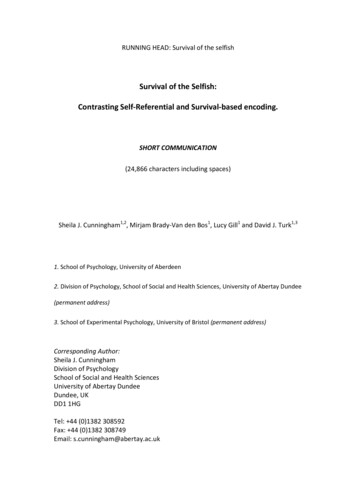
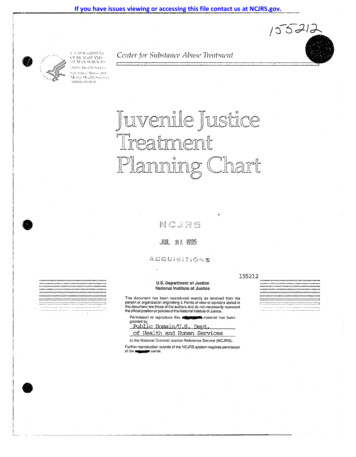
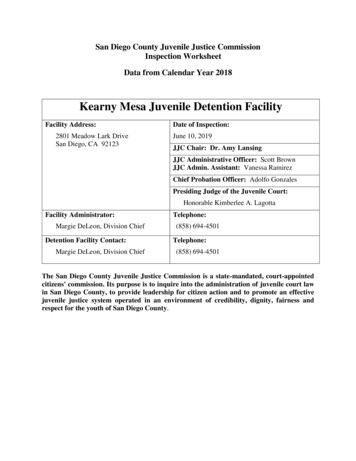



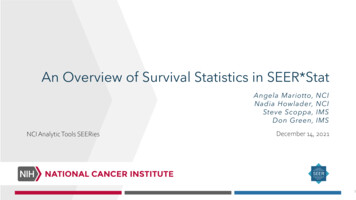

![[ST] Survival Analysis - Stata](/img/33/st.jpg)
